Gympie on track : opening of the Brisbane - Gympie railway 1891
By Simon Miller, Library Technician, State Library of Queensland | 18 July 2016
Railway building in Queensland initially concentrated on routes from various ports on the coast into the interior of the state to the extent that by 1890 there were eleven separate railway systems operating in Queensland. The first step in linking them together in what would be the North Coast Railway Line was the long talked about rail link from Brisbane to Gympie which was opened 125 years ago on Saturday 18 July 1891. However, the first section of the route that would become the North Coast Railway Line was opened ten years earlier in 1881 with the line that connected Gympie with Maryborough. The Maryborough line was extended north to Bundaberg in 1888, so that when the line connecting Brisbane and Gympie was opened trains could run from the capital all the way to Bundaberg.
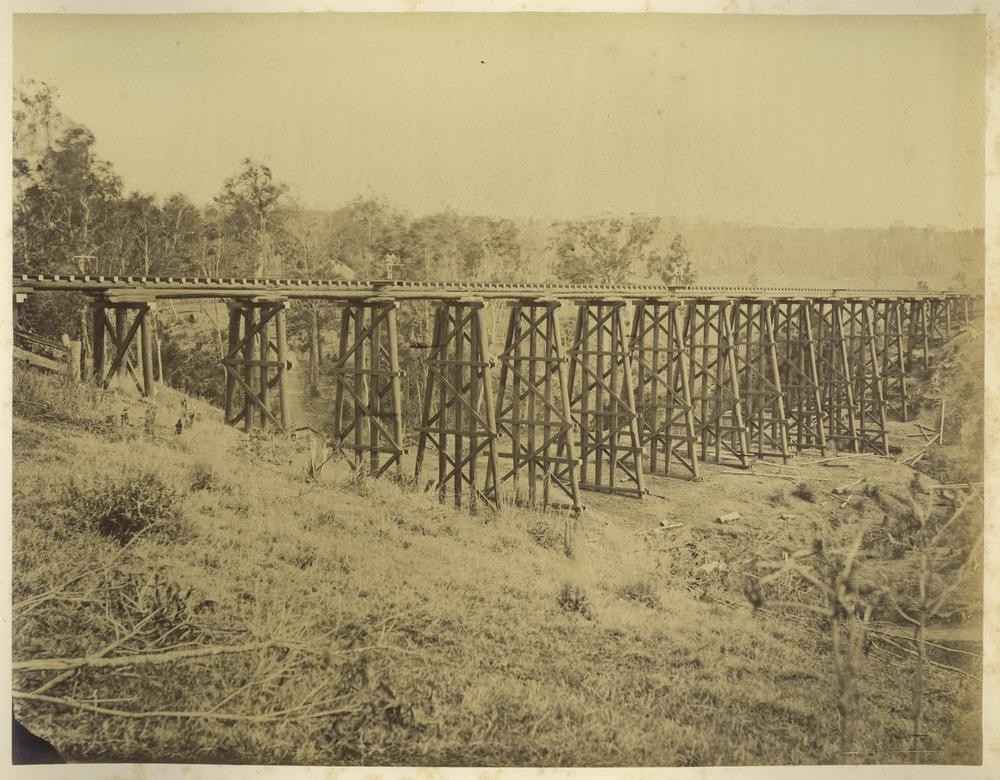
Nash's Gully trestle bridge on the Maryborough railway line, 1882
Gympie itself grew out of the discovery of gold by James Nash in 1867 in the gully that bears his name, seen above bridged by the Maryborough railway line. At the time the Queensland Government was in dire financial straits due to the collapse of some major banks and the need of the government for funds to finance necessary infrastructure for expansion, particularly railways. The government was offering a generous reward for anyone who could discover a workable goldfield within 100 miles of Brisbane and it was James Nash who's discovery of the rich goldfields around what became the town of Gympie not only earned him a £1000 reward but also prevented financial disaster in the new colony.
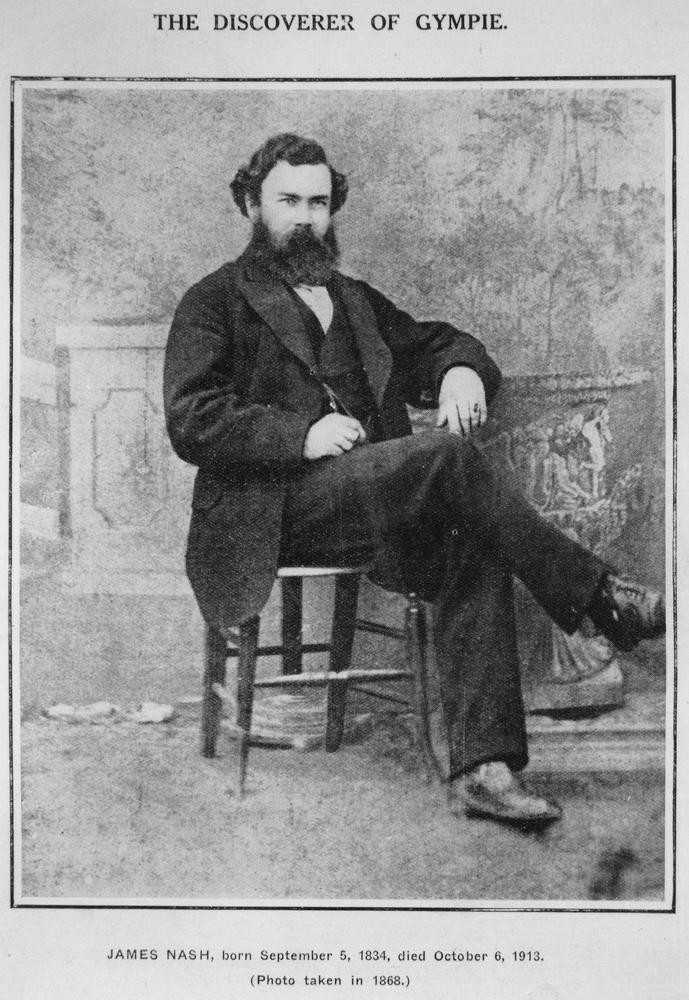
James Nash, 1868
Nash wrote to claim the reward in October 1867 and Gympie grew rapidly as hopeful diggers rushed to the area, having its own post office by the end of 1867. The Borough of Gympie was gazetted in 1880 and Gympie was given the status of town in 1903 and a city in 1905.
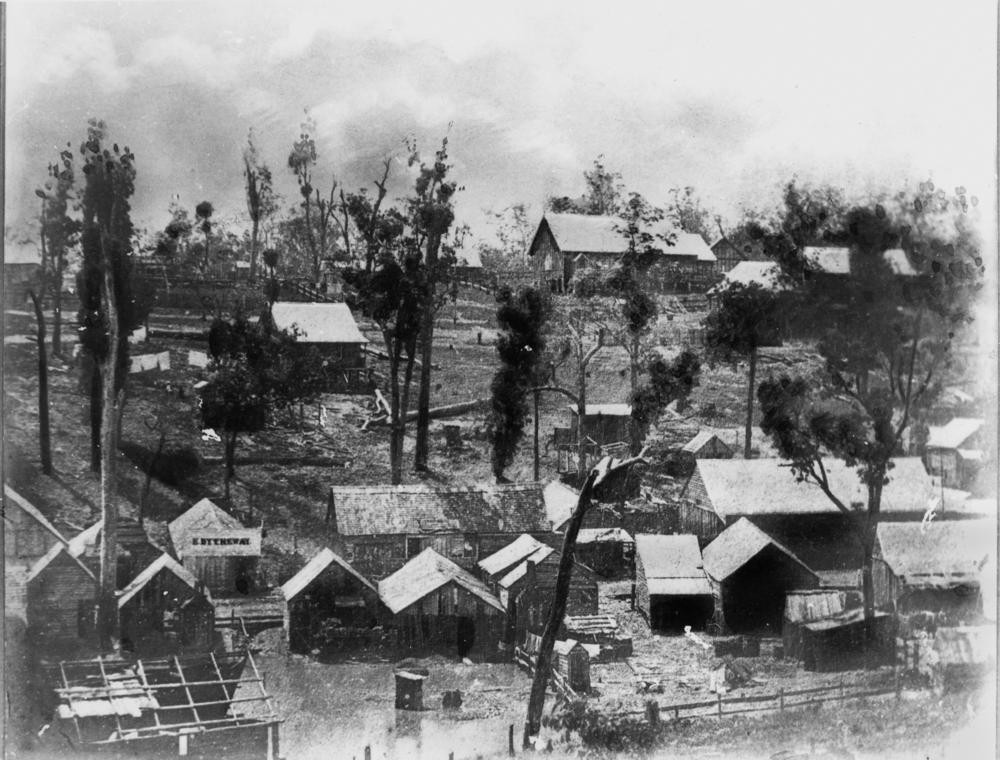
Early view of Gympie, ca. 1870
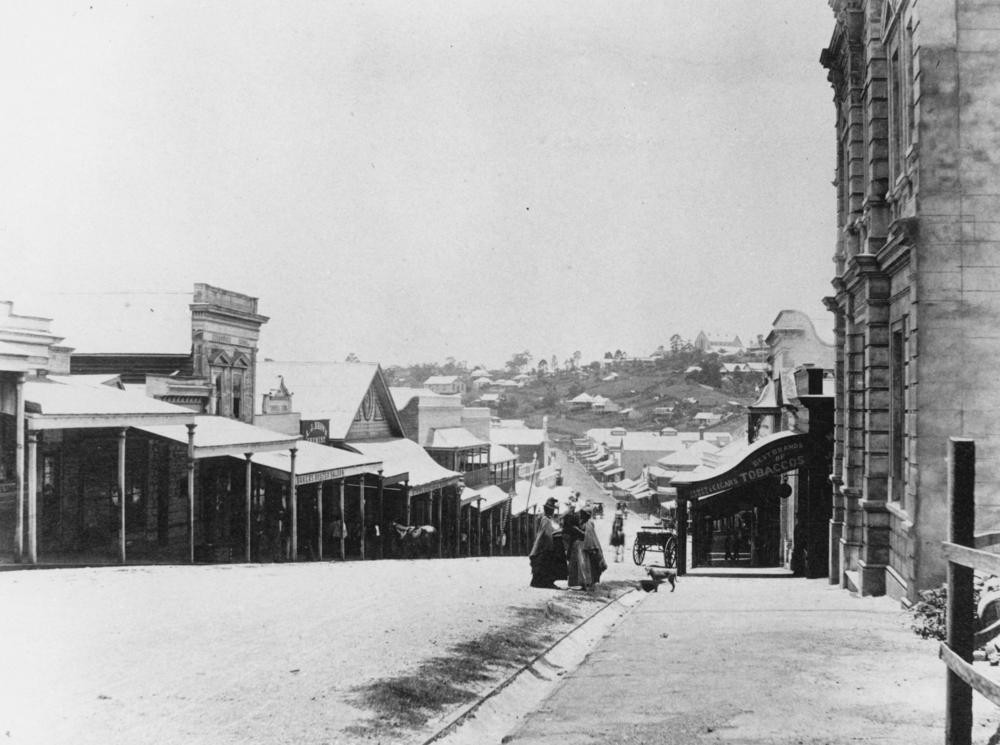
Mary Street Gympie streetscape, ca. 1891
Building a railway from Brisbane to Gympie provided nothing like the engineering challenges that met the builders of the Kuranda railway which opened in the same year. Nevertheless, surveying the route took six years after parliament approved construction of the line in 1883. There were many new lines being planned and surveying resources were stretched thin. The first section to Caboolture was opened in 1888 and other sections were opened as they were completed. Caboolture to Landsborough was opened on 1 February 1890 and to Yandina in January 1891. Meanwhile the line south from Gympie had reached Cooroy by April 1891. At this point the journey from Brisbane to Gympie could be accomplished in a singe day for the first time with a coach taking passengers from Yandina to Cooroy.
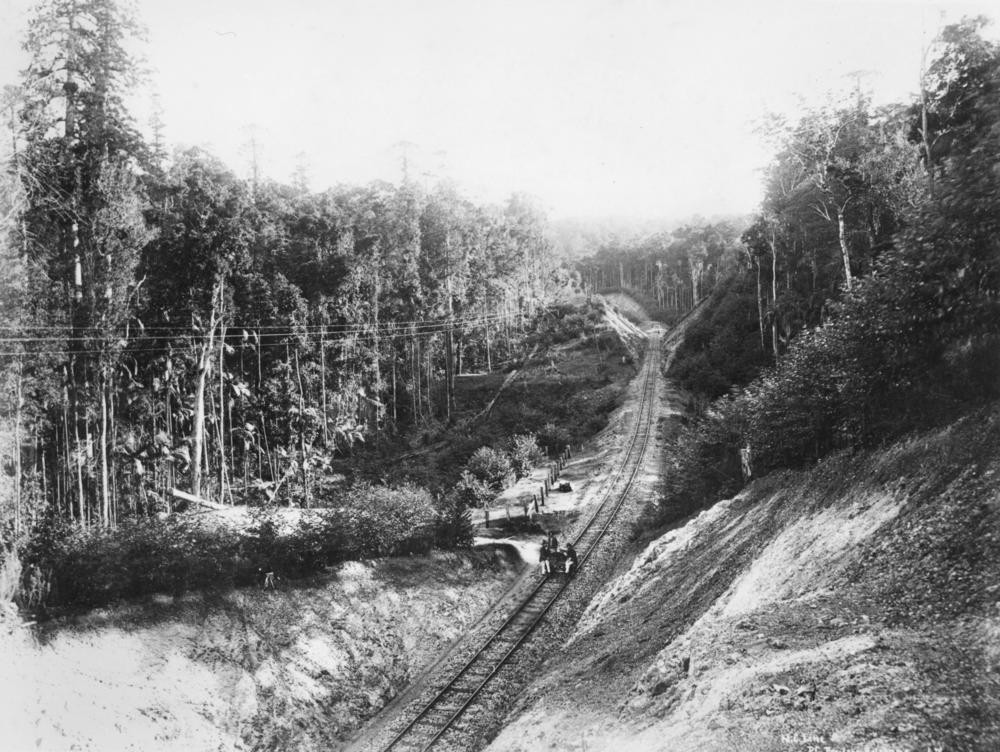
North Coast Railway between Brisbane and Gympie, ca. 1891
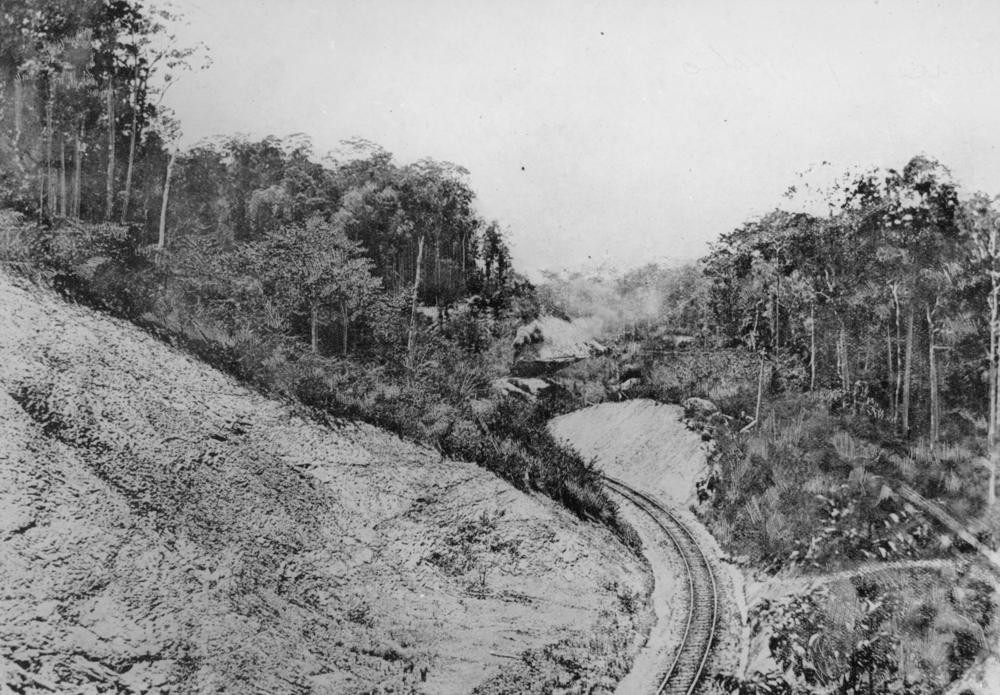
Train travelling through the Cooroy District, ca. 1900
The completed railway line from Brisbane to Gympie was formally opened on 18 July 1891 with the official party, including the Governor and Premier, travelling by a special train before being welcomed with due ceremony in Gympie. The Gympie Times and Mary River Mining Gazette takes up the story.
The official opening of the railway connecting Gympie with the metropolis took place on Saturday. The occasion was looked upon as a red-letter day by the inhabitants of the goldfield, and from early morn the town was in a state of excitement and expectancy, and members of the various military corps and the police flitted all about the place. The weather was beautifully fine, the sun shining out clearly, and a nice bracing breeze also blowing. Very few decorations were attempted, it being only here and there that there was any display of bunting or foliage. This was probably owing to the very short notice received of the date of opening, which gave the citizens very little opportunity of preparing anything gorgeous with which to ornament their premises. The principal places of business closed about 12 o'clock, and nearly everyone wended his way towards the railway station. The Mounted Infantry and B. Company paraded at the drill shed at noon, and about half-an-hour later contingents from these regiments marched from the grounds to the railway station, the former to act as escort to His Excellency the Governor, and the latter, in company with some of the Maryborough Infantry, as a guard of honor. At the station and in the vicinity a very large crowd had gathered, including a numerous attendance of ladies and children. The whistle of the mail train from Brisbane at 1 o'clock was the cause of a rush to the platform, and it took a little time before some people realised that the Governor and the other distinguished visitors who were expected had not arrived. About 10 minutes after this another whistle sounded and word was passed round that the special was coming. The military were drawn up in order and as the train entered the station the regimental band struck up a lively tune. As the carriages drew up alongside the platform hearty cheers were given, and hats and handkerchiefs waved.
The visiting dignitaries were treated to a banquet at the Olympic Hall. The building was very neatly decorated with flags, bannerets, shields, and a brilliant display of all kinds of colored bunting and evergreens. On the stage the members of the Oddfellows' band were seated, being screened from the assemblage by a nice arrangement of ferns, palms, and pot plants. The Gympie Oddfellows band already had an enviable reputation, having won Queensland's first band contest in 1877.
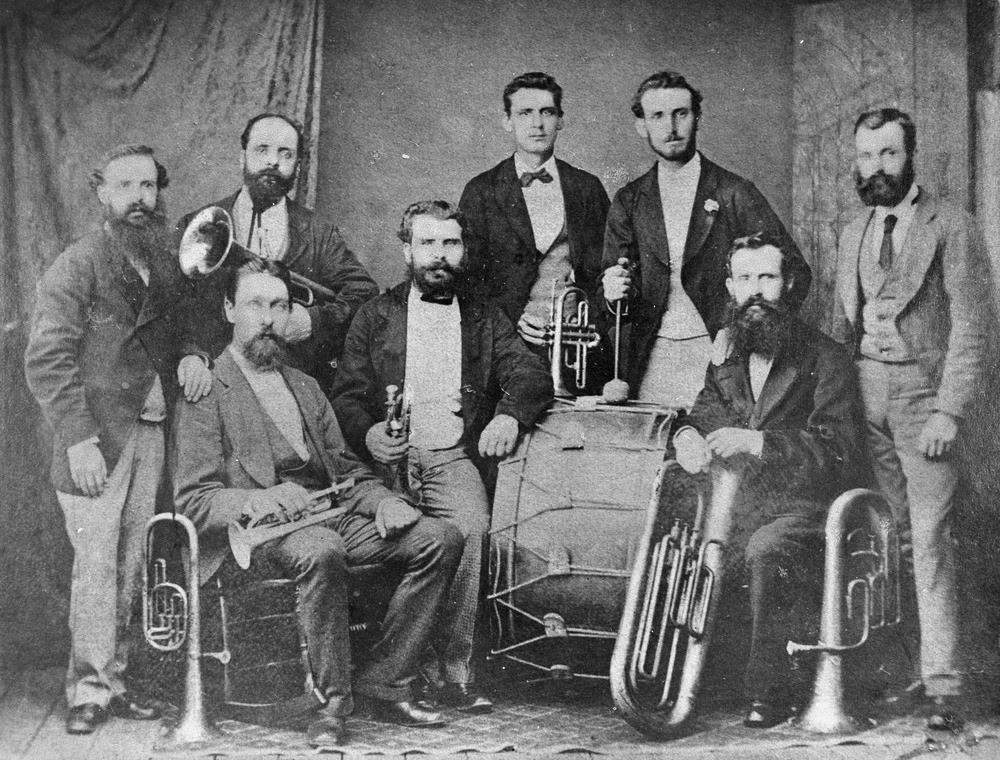
Gympie Oddfellow Band, ca. 1877. They were much expanded by 1891.
After the usual round of speeches the official party had a train waiting to take them back to Brisbane. This brought the proceedings to a close and several of the visitors wore then taken for a short drive around the town, and the station reached in good time for the return journey. A large crowd gathered to witness the departure, a few minutes prior to which an unseemly disturbance took place between some excitable individuals. Eventually the whistle sounded and the train slowly moved out of the station amidst a mixture of cheering and groaning, the crowd afterwards quietly dispersing.
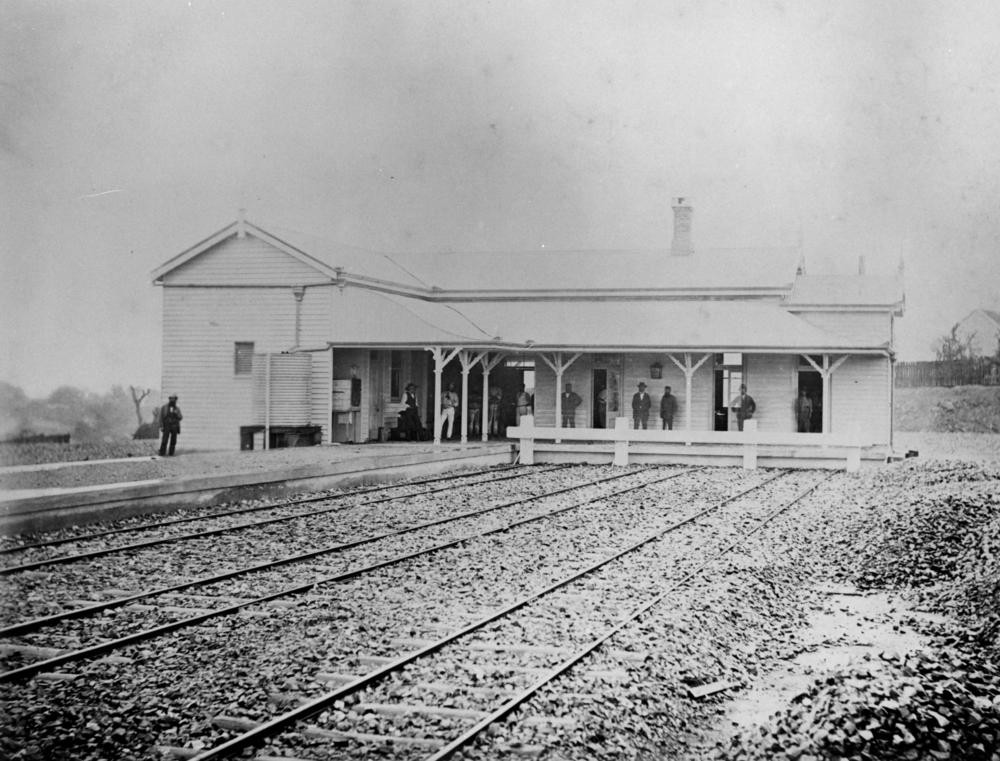
Gympie Railway Station in 1882. At that time it was the end of the line.
Simon Miller - Library Technician, State Library of Queensland
Comments
Your email address will not be published.
We welcome relevant, respectful comments.